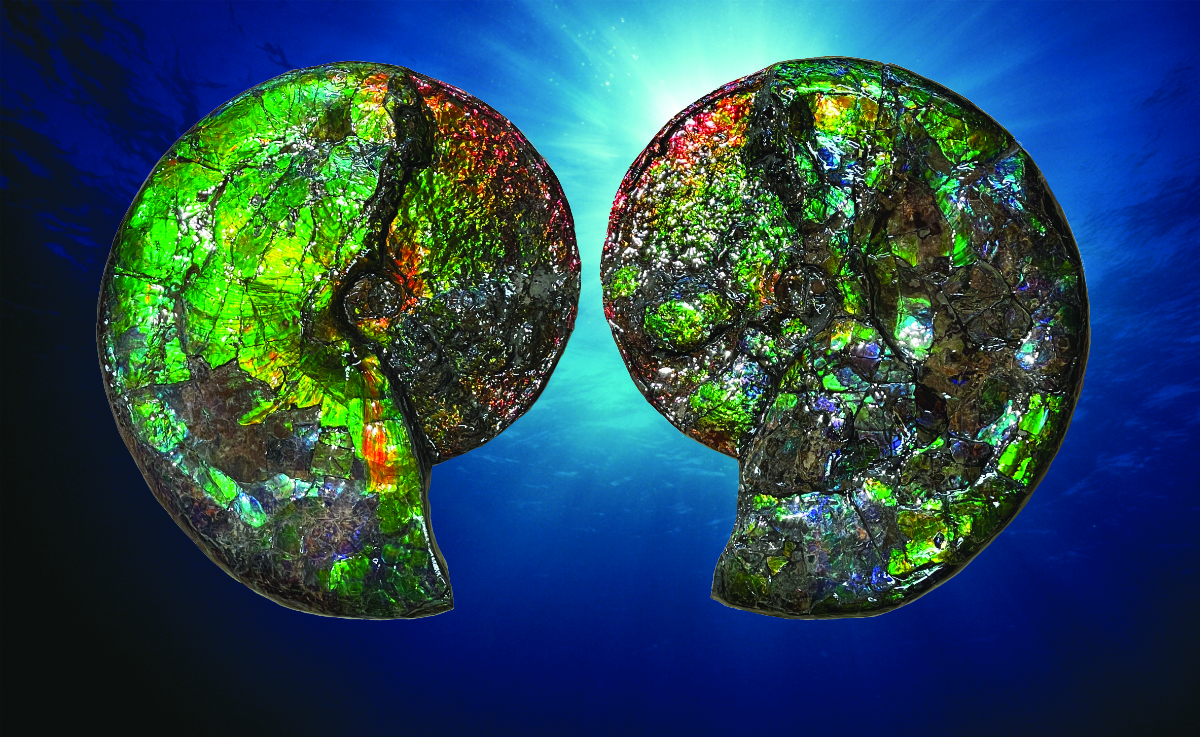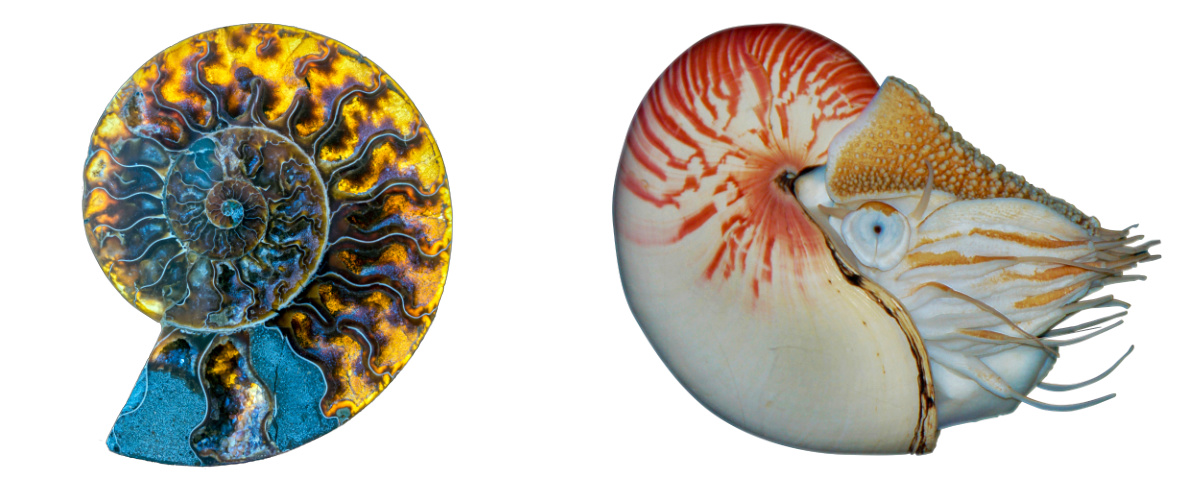Astounding ammonite buried in Noah’s Flood

This amazing ammonite displays incredible iridescent colours: yellows, blues, purples, reds, and greens. These colours formed naturally when trace elements such as barium, strontium, manganese, and titanium were absorbed into its shell after burial. The iridescence is a structural colour, caused by light interference from microscopic plates of the main shell mineral. Thin layers produce violet and blue, thicker layers produce green, yellow, and red.
The resulting fossil is considered a gemstone and called ammolite.1
Ammonites were marine molluscs similar to living nautiluses, octopuses, squid, and cuttlefish. Ammonites are extinct. Their fossils are not found above ‘Cretaceous’ layers, deposited as the waters of Noah’s Flood peaked on the earth. The name ‘ammonite’ was inspired by the spiral shape of their shells, which resemble tightly coiled rams’ horns, as typically adorned depictions of the Egyptian god Ammon (Amun).
The creature had a remarkable engineering and biological design. It inserted its soft body into the largest part of the shell at the end of the coil with its tentacles pointing outwards. The smaller part of the shell was walled off to form chambers. The ammonite could control its buoyancy in the ocean, by adjusting the amount of gas in these chambers. Its design allowed it to thrive in the oceans and multiply to be globally abundant.
This ammonite Placenticeras meeki, (both sides displayed, above), is 53 cm (21 in) across, and from the Bearpaw Formation in Alberta, Canada, which covers a large area. The formation is assigned to the upper Cretaceous. As well as Alberta, it outcrops in Saskatchewan, and the US state of Montana, along the eastern slopes of the Rocky Mountains.

The formation is rich in an amazing array of fossils including other shellfish, bony fish, sharks, rays, birds, marine reptiles like plesiosaurs and mosasaurs, sea turtles—and dinosaurs, which are land-dwellers. The Bearpaw Formation was deposited about halfway through Noah’s Flood when the floodwaters covered the North American continent. Clearly, something remarkable was happening for such an array of different creatures from such different habitats to be overwhelmed, buried quickly, and preserved so well.
The iridescent ammonite is testimony to the Creator’s amazing intelligent design, as well as to the reality of the biblical Flood that covered the whole earth during Noah’s day.
References and notes
- King, H.M., Ammolite: An organic gemstone with a spectacular flash of iridescent colors! geology.com, accessed 9 Nov 2022. Return to text.









Readers’ comments
Comments are automatically closed 14 days after publication.